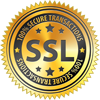
Plasma Pen Fibroblast
Plasma Pen
Plasma pen technology has gained significant popularity in recent years as a non-invasive cosmetic treatment. This advanced device utilizes plasma energy to rejuvenate the skin, offering numerous benefits over traditional methods. In this comprehensive guide, we will delve into the intricacies of the plasma pen, explore its benefits, provide a step-by-step overview of the fibroblast treatment, compare it to microneedling, and address the safety concerns associated with fibroblast treatment.

What is a Plasma Pen
A plasma pen is a handheld device that generates plasma energy, a fourth state of matter, to treat various skin concerns. It works by creating a controlled micro-injury to the skin's surface, stimulating the body's natural healing response and promoting collagen production. The pen emits a high-frequency electric current that ionizes the air, creating a plasma arc between the device and the skin.
Benefits of Plasma Pen Treatment
Skin Tightening:
Plasma pen treatment effectively tightens loose or sagging skin, particularly in areas such as the eyelids, neck, and jawline. The controlled micro-injuries stimulate collagen and elastin production, resulting in firmer, more youthful-looking skin.
Wrinkle Reduction:
By stimulating collagen production, plasma pen treatment can significantly reduce the appearance of fine lines and wrinkles, providing a smoother complexion.
Scar Revision:
Plasma pen treatment can help improve the appearance of scars, including acne scars, surgical scars, and stretch marks. The controlled micro-injuries encourage the growth of new, healthy skin cells, gradually reducing the visibility of scars.
Pigmentation Correction:
The plasma pen can target and lighten areas of hyperpigmentation, such as age spots and sunspots, by promoting the turnover of damaged skin cells.
Non-Surgical Alternative:
Plasma pen treatment offers a non-surgical alternative to traditional cosmetic procedures, such as facelifts or eyelid surgery, with minimal downtime and reduced risks.

Step-by-Step Fibroblast Treatment with Plasma Pen
Consultation:
The first step involves a consultation with a trained professional to assess the client's skin concerns, medical history, and suitability for the treatment.
Preparation:
The treatment area is cleansed, and a topical anesthetic cream may be applied to minimize discomfort.
Plasma Pen Application:
The plasma pen is used to create a series of controlled micro-injuries on the skin's surface. The pen is moved in a precise pattern, targeting specific areas of concern.
Collagen Stimulation:
The plasma energy stimulates the production of collagen and elastin, initiating the skin's natural healing process.
Downtime and Aftercare:
Following the treatment, the skin may appear red and swollen. The client is advised to follow specific aftercare instructions, including avoiding direct sunlight, applying soothing creams, and avoiding makeup for a few days.
Results and Follow-up:
Over the following weeks, the skin gradually improves as collagen production continues. Multiple sessions may be required for optimal results, depending on the individual's skin condition.
Plasma Pen vs. Microneedling
While both plasma pen treatment and microneedling aim to stimulate collagen production, they differ in their mechanisms and target areas. Plasma pen treatment utilizes plasma energy to create controlled micro-injuries, primarily targeting loose skin, wrinkles, and scarring. On the other hand, microneedling involves using tiny needles to create microchannels in the skin, promoting collagen production and improving overall skin texture. The choice between the two treatments depends on the specific skin concerns and the recommendations of a skincare professional.
Safety of Fibroblast Treatment
Fibroblast treatment with a plasma pen is generally considered safe when performed by a trained and experienced professional. However, as with any cosmetic procedure, there are potential risks and side effects. These may include temporary redness, swelling, scabbing, or hyperpigmentation. It is crucial to follow the aftercare instructions provided by the professional to minimize these risks and ensure proper healing. Individuals with certain medical conditions or skin sensitivities should consult with a healthcare professional before undergoing fibroblast treatment.

Conclusion
Plasma pen treatment, with its numerous benefits and ability to stimulate collagen production, has become a popular non-invasive cosmetic procedure. The step-by-step fibroblast treatment process outlined above provides an overview of what to expect during the procedure. While plasma pen treatment offers distinct advantages over microneedling, the choice between the two depends on individual needs. When performed by a trained professional, fibroblast treatment with a plasma pen is generally safe, but it is essential to follow proper aftercare instructions and consult with a healthcare professional if necessary.
Did not find what you were looking for or do you have any questions? Drop us a message here! .And why not to Follow our Instagram page our facebook to stay updated about our new products and blog.
























